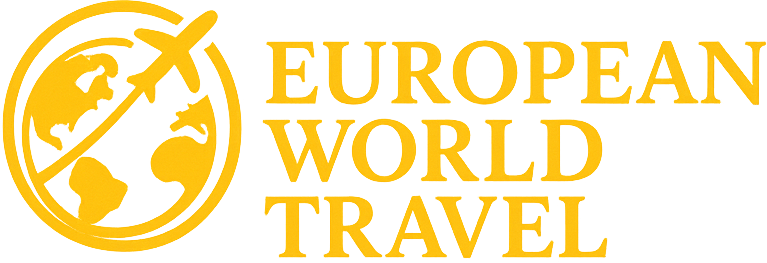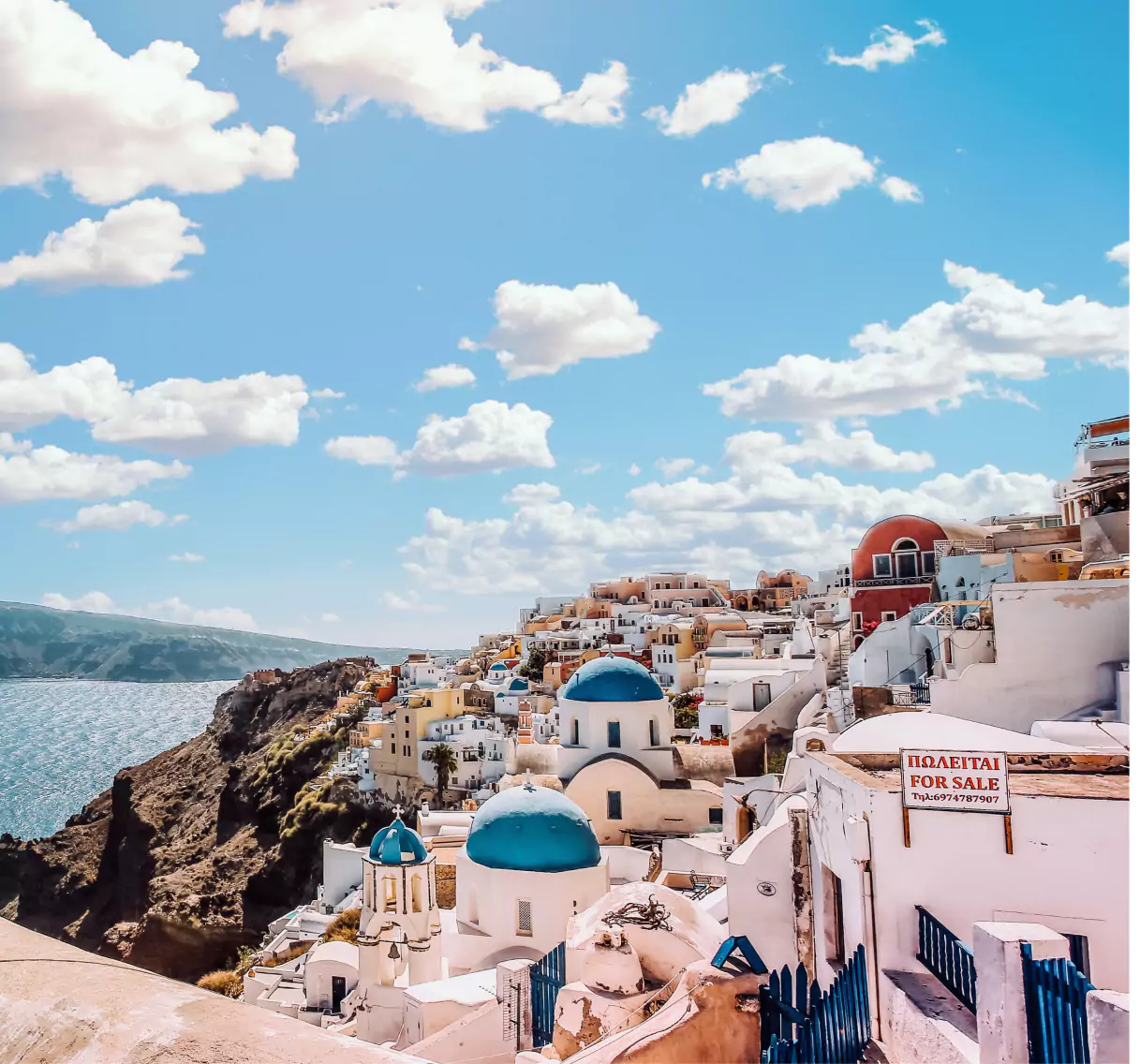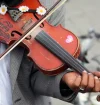The Thomas Crown Tour
Touring The Thomas Crown Affair (1999): European Art Heists & Caribbean Escapes
In the 1999 remake of The Thomas Crown Affair, billionaire Thomas Crown (Pierce Brosnan) steals a priceless Monet from a New York museum and indulges in a romantic Caribbean escape. This stylish heist film showcases a mix of cultural landmarks and exotic scenery – many with European roots. From grand art museums to a sun-soaked French island, fans can follow in Crown’s footsteps. Below, we explore the museums, artwork, and filming locations featured in the film (emphasizing those in Europe) and how to experience them today, plus a nod to the 1968 original’s iconic locales.
The Art Heist Setup – Manhattan’s Metropolitan Museum (New York, USA)
Thomas Crown’s caper begins at Manhattan’s famed Metropolitan Museum of Art (the “Met”). In the film, Crown steals San Giorgio Maggiore at Dusk, a Claude Monet masterpiece, from a gallery here. The Met’s exterior on Fifth Avenue is shown on screen (The Thomas Crown Affair | Film Locations), and you can visit this world-class museum yourself – it’s open to the public and houses an extensive European art collection. (Fun fact: The Met did not permit interior filming, so the breathtaking interior gallery scenes were actually shot on a soundstage and in the New York Public Library’s grand entrance hall (The Thomas Crown Affair | Film Locations). Even so, standing on the Met’s front steps or wandering its real galleries will feel familiar to fans of the film.)
· Travel Tip: The Met is enormous – consider a highlights tour focusing on Impressionist paintings to echo Crown’s interests. Admission is “pay-what-you-wish” for NY residents and ticketed for others. Arrive early to avoid lines, and don’t miss the Monet and Van Gogh halls to see real works by Crown’s favorite artists.
Monet’s San Giorgio Maggiore at Dusk – From Venice to Wales
(File:San Giorgio Maggiore at dusk – Venice, Italy – panoramio.jpg – Wikimedia Commons) San Giorgio Maggiore at dusk in Venice, the scene immortalized by Monet’s stolen painting in the film. In The Thomas Crown Affair, the purloined painting is Monet’s San Giorgio Maggiore at Dusk – an Impressionist view of a Venetian island at twilight. While Crown nabbed it in New York, art lovers should head to Cardiff, Wales to see it in person. The original canvas (also known as Twilight in Venice) is housed at the National Museum Cardiff in Wales and is usually on public display (The Thomas Crown Affair (1999 film) – Wikipedia). Standing before this luminous painting, you’ll recognize the warm oranges and cool blues that captivated Crown on screen.
Visiting Cardiff’s National Museum offers a double delight: you not only view Monet’s Venetian scene up close, but also explore the museum’s wider European art collection (including other Impressionist gems). For an extra dose of romance, consider a trip to Venice, Italy itself – Monet’s subject. At dusk, you can gaze across the Venetian lagoon at the actual San Giorgio Maggiore church silhouetted against the sunset, just as Monet did in 1908. It’s a real-life travel experience that mirrors the painting’s ethereal beauty.
· Travel Tip: National Museum Cardiff has free entry, and highlights include Impressionist works by Monet, Sisley, and Pissarro. After admiring San Giorgio Maggiore at Dusk, you can stroll Cardiff’s civic center or enjoy nearby Bute Park. If you make it to Venice, take a vaporetto (water bus) to San Giorgio Maggiore island for panoramic views of Venice – especially stunning at twilight, when the sky resembles Monet’s canvas.
Parisian Highlights – The Louvre and Musée d’Orsay (Paris, France)
Thomas Crown’s art adventures spotlight several French masterpieces which today reside in Paris, making the City of Light a must-stop for fans. In the film, Crown admires a painting he calls “his haystacks,” which is actually Noon: Rest from Work (after Millet) by Vincent van Gogh (The Thomas Crown Affair (1999 film) – Wikipedia). The real painting – a dreamy scene of farmers resting, inspired by Millet – hangs in Musée d’Orsay in Paris. At the Orsay, you can see this Van Gogh up close along with its famous brethren (the museum holds the world’s largest collection of Impressionist and post-Impressionist art). Standing before the very canvas Crown coveted offers a tangible connection to the film’s art themes.
Another artwork name-dropped in the movie is The Intervention of the Sabine Women by Jacques-Louis David. This neoclassical masterpiece is part of the collection at the Louvre Museum (The Thomas Crown Affair (1999 film) – Wikipedia) in Paris. While it’s not central to the plot, it’s visible in the background of Crown’s art gallery scenes. Visitors to the Louvre can find David’s painting in the museum’s vast halls – it depicts an ancient Roman legend with dramatic flair and is well worth a look. Of course, the Louvre is also home to the Mona Lisa and countless other treasures, so you might end up spending hours (or days) in this former palace of art.
· Travel Tip: The Musée d’Orsay (a converted Beaux-Arts railway station) is closed on Mondays – plan accordingly. Try a late-night visit on Thursdays when it’s open until 9:45pm for thinner crowds. At the Louvre, pre-book a timed ticket online (The Thomas Crown Affair (1999 film) – Wikipedia) and use the lesser-known Passage Richelieu entrance to avoid the long lines at the glass pyramid. Both museums offer audio guides; consider a themed tour (e.g., “masterpieces tour”) to efficiently locate highlights like David’s Sabine Women.
London’s Courtauld Gallery – Manet’s Missing Masterpiece (London, UK)
In a clever twist, Catherine Banning (Rene Russo) acquires a second painting in the film – Banks of the Seine at Argenteuil by Édouard Manet – which Thomas Crown later surreptitiously returns. This Impressionist piece, showing a serene riverside scene, currently resides in London. You can visit it at the Courtauld Gallery, part of Somerset House in central London (The Thomas Crown Affair (1999 film) – Wikipedia). The Courtauld is renowned for its Impressionist and Post-Impressionist collection, and Manet’s river scene is a highlight (as is his famous Bar at the Folies-Bergère).
The gallery recently re-opened after a refurbishment, offering beautifully lit galleries where you can view Manet, Monet, Gauguin, and more. Seeing Banks of the Seine at Argenteuil in person, you might recall how this was the painting Catherine “borrowed” in the movie – a fun connection for fans. Beyond Thomas Crown, Somerset House itself is a grand attraction; the neoclassical courtyard often hosts art installations and in winter even an ice rink.
· Travel Tip: The Courtauld Gallery is usually open daily, but time-slot booking might be required during popular exhibitions – check online in advance. It’s a compact museum, so plan for about 1–2 hours. After enjoying Manet’s work, relax at Somerset House’s riverside café or walk to the nearby National Gallery in Trafalgar Square for more art (admission there is free).
Surreal Encounters in Brussels – Magritte’s Bowler Hats (Brussels, Belgium)
One of the most memorable images from The Thomas Crown Affair (1999) is the bowler hat scene. In the film’s climax, Crown’s accomplices don identical bowler hats to confuse authorities – a direct homage to Belgian surrealist René Magritte’s famous painting The Son of Man, which depicts a man in a suit with a floating apple obscuring his face (The Thomas Crown Affair (1999 film) – Wikipedia). Magritte’s artwork actually hangs in Crown’s apartment in the movie, and Catherine jokes that it represents “the stereotypical faceless businessman.” This artistic reference brings a bit of Belgium into the film’s heart.
To immerse yourself in Magritte’s world, head to Brussels, Belgium, where the Musée Magritte Museum celebrates the artist’s life and work. This modern museum (opened in 2009 on Place Royale) holds the world’s largest collection of Magritte’s art (Art Galleries in Brussels: Don’t Miss the Magritte Museum | Luxury Travel Advisor). You’ll see plenty of bowler hats, green apples, and whimsical surrealism across its three floors. While The Son of Man itself is privately owned (and not on permanent display), the museum showcases related works and gives insight into Magritte’s influence on art and pop culture (including films like Thomas Crown). Wandering through, you can’t help but recall the film’s final caper set to Nina Simone’s “Sinnerman,” with bowler-hatted decoys blending into the museum crowd (Art Galleries in Brussels: Don’t Miss the Magritte Museum | Luxury Travel Advisor) – a scene directly inspired by Magritte’s imagery.
· Travel Tip: The Magritte Museum is part of Brussels’ Royal Museums of Fine Arts. It’s open Tuesday through Sunday; consider buying a Brussels Card if you plan to visit multiple museums, as it offers free entries and public transport deals (Art Galleries in Brussels: Don’t Miss the Magritte Museum | Luxury Travel Advisor). After your surreal art fix, take a short walk to the nearby Mont des Arts gardens for a panoramic view of Brussels, or enjoy a Belgian waffle at a café – a sweet end to an artful day.
Martinique – Crown’s Exotic Island Getaway (French Caribbean)
After the art heist drama, Thomas Crown whisks Catherine away to an island paradise – revealed as Martinique in the eastern Caribbean. This French overseas region doubles as the lovers’ idyllic hideout in the film. On screen, we see a stunning clifftop villa where the pair unwind in luxury. That villa is a real private residence located in Le Vauclin district on Martinique’s southeastern coast, perched above Baie du Vauclin and overlooking a tiny offshore islet called Îlet Petite Grenade (Caribbean and the big screen | P&O Cruises). Though the home is privately owned (and not open to visitors), you can still channel the Thomas Crown vibe by exploring the island’s beautiful beaches and French-Caribbean culture.
Martinique offers a blend of European flair and tropical scenery – no art heist required to enjoy it. For example, just south of the Crown film house location lies Sainte-Anne, a charming village near some of Martinique’s best beaches. Les Salines Beach (Plage des Salines) in Sainte-Anne is a postcard-perfect stretch of powdery white sand and calm turquoise waters, often cited as one of the finest beaches in the Caribbean. Head there for a swim or picnic beneath the palm trees and you’ll understand why Crown picked Martinique for a romantic escape. The island also boasts lush rainforests in the north (suitable for hikes to waterfalls and Mount Pelée volcano), rum distilleries offering tastings of world-class rhum agricole, and colorful local markets (try the capital Fort-de-France for Creole food and spices). English is not widely spoken, so brush up on a little French – but a warm bienvenue (welcome) awaits.
(File:Plage Saint-Anne Martinique.JPG – Wikimedia Commons) The turquoise waters at Sainte-Anne, Martinique, near the area where Crown’s getaway was filmed. Tourists can enjoy Martinique’s beaches and Creole charm just like Thomas Crown – no billionaire status needed. According to travel experts, you don’t have to be a billionaire or steal art to enjoy Martinique’s spoils – just venture along the coast for gems like Sainte-Anne or venture inland to the tropical forest (Caribbean and the big screen | P&O Cruises). The island is accessible via Martinique Aimé Césaire International Airport or cruise ports, and as part of France, it combines Caribbean beauty with French influences (think fresh baguettes alongside mangoes and coconuts). For film devotees, simply knowing you’re sunbathing or sailing in the same paradise seen in The Thomas Crown Affair adds a cinematic touch to your trip.
· Travel Tip: Getting to Martinique: As a French territory, Martinique may require the same entry requirements as France (Schengen visa rules) for some nationalities – check ahead. Once there, renting a car is the best way to explore the island’s diverse regions at your own pace. Don’t miss a coastal drive down to Le Vauclin to glimpse the general area of Crown’s villa (respecting private properties, of course). Cap off your day with a planter’s punch (local rum cocktail) at a beach bar, watching the sunset – a real-life echo of the film’s dreamy finale.
Retro Corner: The 1968 Original’s Locations and Legacy
Before Pierce Brosnan’s suave art thief, the original The Thomas Crown Affair (1968) starring Steve McQueen unfolded in a different setting – but with equal glamour. The ’68 film traded Manhattan art galleries for Boston’s high society haunts. Thomas Crown was a Boston banker, and many scenes were shot around that historic city. For instance, Crown’s stately home was on Beacon Hill, Boston’s most exclusive neighborhood of brick townhouses and gas-lit lanes (The Thomas Crown Affair | Film Locations). (Fans can still walk past 85 Mount Vernon Street – the Second Harrison Gray Otis House – which served as his mansion’s exterior (The Thomas Crown Affair | Film Locations). Beacon Hill’s old-world charm makes it a popular spot for walking tours, even if you’re not on a movie pilgrimage.)
The original film’s heist was a bank robbery, culminating in a dramatic money drop at a cemetery just outside the city. Boston locals note that visitors still come to Mount Auburn Cemetery in Cambridge looking for the spot where Crown’s crew dumped the cash, intrigued by that piece of movie lore (Mount Auburn Cemetery – Facebook). Instead of international jaunts, McQueen’s Crown kept his adventures regional: a stylish scene of him piloting a glider was filmed in Salem, New Hampshire (The Thomas Crown Affair | Film Locations), and the famous romantic interlude had Crown and investigator Vicki Anderson (Faye Dunaway) driving a dune buggy across the sands of Crane Beach in Ipswich, Massachusetts (The Thomas Crown Affair | Film Locations) (The Thomas Crown Affair | Film Locations). (Crane Beach is open to the public – you too can feel the wind in your hair on this wide Atlantic beach, perhaps minus the buggy jumps!). And who could forget the seductive chess game in the original? That was set in an elegant Boston dining room (filmed on a soundstage), contrasting with the 1999 version’s flirtations amid paintings.
Overlap & Contrast: Unlike the 1999 remake’s European art emphasis, the 1968 film only lightly touches on art (a brief auction scene on Beacon Hill (The Thomas Crown Affair | Film Locations)). Instead, it showcased New England’s elite life – from golf at Belmont Country Club (The Thomas Crown Affair | Film Locations) to polo matches at Myopia Hunt Club in Hamilton, MA (The Thomas Crown Affair | Film Locations) (both real locations, though these private clubs aren’t generally open to sightseers). Faye Dunaway’s character in 1968 was an insurance investigator like Russo’s, and interestingly Dunaway herself appears in the 1999 film in a cameo as Crown’s therapist (The Thomas Crown Affair | Film Locations) – a fun connection bridging the two versions. The biggest contrast might be the getaway: 1968’s Crown hints at escaping to Geneva or another distant locale at the end, but it isn’t shown on screen, whereas 1999’s Crown literally flies Catherine to a Martinique paradise for the finale. This shift reflects how the remake infused a more global, jet-setter flair into the story, giving travel enthusiasts even more locales to dream about.
In Summary: The Thomas Crown Affair (1999) offers more than just a cat-and-mouse romance – it’s practically a travelogue of art and leisure. Whether you’re tracing the path of a stolen Monet to a Welsh museum, standing under Magritte’s bowler-hat legacy in Brussels, admiring paintings in Paris and London that inspired the film’s plot, or lounging on a French-Caribbean beach worthy of a billionaire’s escape, each location has something special for visitors. Below is a quick-reference table of the key tourist spots from the film and how you can access them. Pack your curiosity (and maybe a stylish hat), and enjoy an artful journey worthy of Thomas Crown himself!
Location (Film Reference) Country/Region Type of Location Public Accessibility Metropolitan Museum of Art (exterior scene) – New York City USA Art Museum Yes – public (open daily, ticket required) New York Public Library (interior stand-in for museum) – New York City USA Historic Landmark (Library) Yes – public (free entry to main areas) National Museum Cardiff (Monet’s San Giorgio Maggiore at Dusk) – Cardiff, Wales UK (Wales) Art Museum Yes – public (free admission) Musée d’Orsay (Van Gogh’s Noon: Rest from Work) – Paris, France France Art Museum Yes – public (ticket required; closed Mondays) Louvre Museum (David’s Sabine Women) – Paris, France France Art Museum Yes – public (ticket required; closed Tuesdays) Courtauld Gallery (Manet’s Banks of the Seine) – London, England UK (England) Art Gallery/Museum Yes – public (ticket required) Musée Magritte (Magritte Museum) – Brussels, Belgium Belgium Art Museum (Surrealism) Yes – public (ticket required; closed Mondays) Thomas Crown’s Villa (film location) – Le Vauclin, Martinique Martinique (French Caribbean) Private Villa (Hilltop) No – private property (viewable from a distance) Les Salines Beach & Sainte-Anne (near Crown’s hideaway) – Martinique Martinique (French Caribbean) Beach / Coastal Village Yes – public beach (open access) Enjoy your European (and Caribbean) world travel inspired by The Thomas Crown Affair! Each destination offers a chance to relive a bit of movie magic – be it through a masterpiece in a gallery or a sunset on a secluded shore – making you part of the adventure long after the credits roll.



